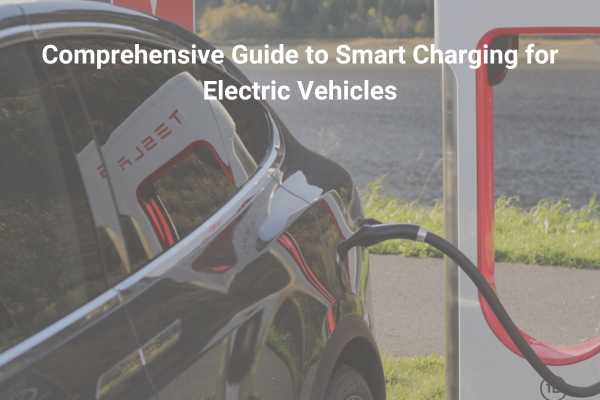Comprehensive Guide to Smart Charging for Electric Vehicles


In this blog, we will delve into the intricate workings of the BMS and explore how it unlocks the performance of electric vehicle batteries, ultimately alleviating range anxiety and revolutionizing the EV industry.
Understanding the factors that affect electric vehicle range is crucial in addressing this concern and maximizing the driving distance.
Battery Capacity: The capacity of the battery pack is a primary determinant of an electric vehicle's range. A higher-capacity battery can store more energy, allowing for a longer driving distance. Advances in battery technology have led to the development of higher energy-density batteries, enabling EVs to have larger battery capacities and extended ranges.
Driving Conditions: Various driving conditions can impact the range of an electric vehicle. Factors such as speed, acceleration, and braking habits influence energy consumption. Higher speeds and aggressive driving styles can lead to increased energy consumption and reduced range. Additionally, driving uphill or in extreme weather conditions, such as extreme cold or hot temperatures, can also affect range.
Terrain and Road Conditions: The terrain and road conditions can have an impact on the electric vehicle range. Driving uphill or on hilly terrains requires more energy compared to driving on flat roads. Similarly, rough road surfaces, frequent stops, and traffic congestion can affect the range by increasing energy consumption.
Environmental Factors: Environmental conditions, such as temperature and wind resistance, can affect the range of an electric vehicle. Cold temperatures can reduce battery efficiency and increase energy consumption for heating. Wind resistance at higher speeds can also lead to higher energy consumption and decreased range.
Vehicle Weight and Aerodynamics: The weight of the vehicle and its aerodynamics play a role in energy consumption and range. Heavier vehicles require more energy to move and can have a reduced range. Streamlined designs and efficient aerodynamics help minimize drag, allowing the vehicle to overcome wind resistance and improve range.
Auxiliary Systems: The operation of auxiliary systems, such as air conditioning, heating, and multimedia, can impact range. Using these systems increases energy consumption and reduces the available energy for driving. Efficient management of auxiliary systems by the BMS can optimize energy usage and extend range.
Let's explore the specific roles of the BMS in optimizing these factors for an extended range.
Battery Capacity Management: The BMS is responsible for managing the state of charge (SOC) of the battery pack. It monitors the SOC and ensures that it stays within optimal operating limits. By avoiding overcharging or deep discharging, the BMS helps prolong the battery life and maintain its capacity over time. This capacity management is crucial for maintaining a consistent range throughout the battery's lifespan.
Energy Efficiency Optimization: The BMS employs advanced algorithms and intelligent energy management strategies to optimize energy efficiency. It considers factors such as driving conditions, terrain, and environmental conditions to adjust power delivery and optimize energy consumption. For example, the BMS may limit the power output during uphill driving to conserve energy or take advantage of regenerative braking to recover and store energy that would otherwise be lost during deceleration.
Thermal Management: The BMS actively monitors and manages the temperature of the battery pack. High temperatures can degrade the battery's performance and reduce its capacity, leading to a decreased range. The BMS controls the thermal management system, which includes cooling and heating mechanisms, to maintain the battery at an optimal temperature range. By regulating the battery's temperature, the BMS ensures optimal performance and extends the range.
Range Estimation: The BMS incorporates sophisticated algorithms to provide accurate range estimations to the driver. It considers various factors such as battery SOC, driving history, and real-time energy consumption to calculate the remaining range. This information helps drivers plan their journeys and make informed decisions about charging stops, thereby maximizing the available range.
Predictive Analytics: The BMS can analyze historical data and driving patterns to make predictive calculations about range and energy consumption. By learning from previous driving behavior and adapting to individual driving styles, the BMS can provide personalized range estimations. This feature increases the accuracy of the range estimation and helps drivers better plan their trips.
System Integration and Communication: The BMS acts as a central hub, integrating and communicating with other vehicle systems. It exchanges information with the motor controller, power electronics, and vehicle's infotainment system to optimize energy consumption and coordinate power delivery. This integration ensures that all components work together harmoniously to maximize efficiency and extend the range.
The battery management system (BMS) plays a vital role in extending the range of electric vehicles by optimizing various factors that impact battery performance. By managing battery capacity, optimizing energy efficiency, controlling thermal conditions, providing accurate range estimations, and integrating with other vehicle systems, the BMS unlocks the full potential of electric vehicle batteries.
Don't compromise on range or efficiency. Choose cleanenergyev.com and unlock the true potential of your electric vehicle. Visit our website or contact us today to learn more about our industry-leading BMS solutions and how they can transform your electric driving experience.